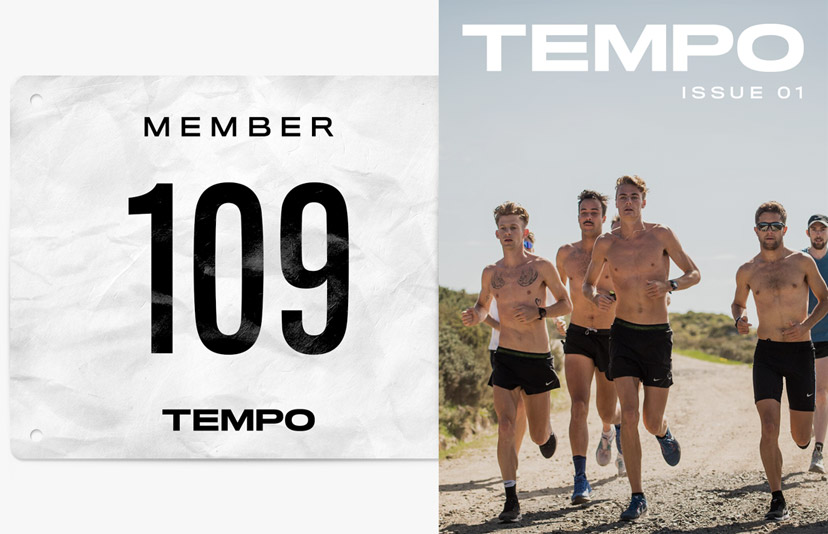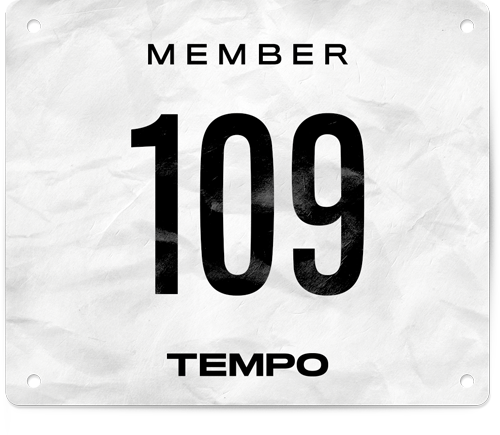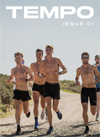Performance
The Power of Choice
How Nike’s 9box Framework Is Reshaping Running for Every Athlete
Tempo Journal was among a select group of media invited to regional Victoria where Nike unveiled its 9box road running framework. It's a fundamental rethinking of how runners choose their shoes, moving from prescription to personal preference.
Nike has always been about the athlete. But in a world where 3.4 million Australians lace up each year – from dawn patrol runners to marathon veterans – the question isn’t just what shoe to wear, but which shoe for which run. Enter Nike’s 9box framework: a fundamental shift from prescribing what runners need to offering what they want.
Over two days in regional Victoria, Tempo Journal joined Nike’s global footwear experts as they unpacked this new approach. The “Power of Choice” retreat gave select media a closer look at the Swoosh’s new, simplified approach to running footwear and, with its Mount Martha location, gave us plenty of opportunity to road test some of the new models on hilly terrain.
The 9box construct sounds complex but operates on elegant logic. Three cushioning philosophies – Pegasus (responsive), Vomero (maximum), and Structure (supportive) – each expressed across three tiers: Icon, Plus, and Premium.
Speaking via video link from Nike’s legendary Beaverton, Oregon, headquarters, Deepa Ramprasad, senior director of Nike Running Footwear, distilled the framework’s genesis into a simple truth: “Runners love cushioning – a lot. And they needed choice in that cushioning and that sensation. And they needed that choice to be really clear.”
It’s a deceptively straightforward insight that’s reshaping how Nike thinks about serving everyone from first-time joggers to Olympians like Faith Kipyegon.
Three Pillars, Nine Possibilities
The 9box construct sounds complex but operates on elegant logic. Three cushioning philosophies – Pegasus (responsive), Vomero (maximum), and Structure (supportive) – each expressed across three tiers: Icon (that is, currently, the Pegasus 41, Vomero 18 and Structure 26), Plus, and Premium. Nine shoes total, but more importantly, nine distinct experiences designed around a runner’s relationship with the road.
(If a Google search tells us anything, the “9box” terminology seems only to be emerging with our media retreat – you heard it here first, folks – but it builds on the same three cushioning categories unveiled late last year. The framework applies to what we would call everyday road running shoes and doesn’t change anything with Nike’s specialist tempo or race-day models such as Streakfly, Vaporfly or Alphafly.)
“When Nike’s at its best, it’s really simple,” Deepa explains. “We really ground ourselves in two things: listening to the voice of the athlete and innovating always.”
For the Pegasus franchise, it’s about runners who want to feel the ground – or, as Nike Running Footwear product manager (and coach and former elite athlete) Elliottt Heath puts it, “feel the ground but not be on the ground”. The new-for-2025 Pegasus Premium embodies this with its curved, full-length Air Zoom unit sandwiched between ReactX and ZoomX foams, delivering what Elliott, who dialled in from Portland, OR, calls “a sports car feeling”.
The Vomero silo takes the opposite approach. Ashley Campbell, Nike’s expert product line manager and another former runner and coach, also spoke to us from the United States. On our video call, she described the forthcoming Vomero Premium’s inspiration as delightfully unconventional: the anti-gravity treadmill. “Our athletes have told us it’s made a really big impact on their overall performance,” she says. “You feel weightless; it’s this bounding sensation ... that’s really what we wanted to embody with this shoe.” Arriving hot on the heels of the Vomero Plus, the Vomero Premium launches in early October. We’ve talked about simplification; perhaps the most obvious example is that the Invincible 3 is being retired in favour of the Vomeros Plus and Premium.
Structure rounds out the trio with supportive cushioning that, as Ashley puts it, “doesn’t sacrifice comfort and fun”. The newly launched Structure 26 introduces ReactX foam to the franchise for the first time, addressing a long-standing perception that stability shoes are boring.
“Runners love cushioning – a lot. And they needed choice in that cushioning and that sensation. And they needed that choice to be really clear.”
Deepa Ramprasad, senior director of Nike Running Footwear
The Democracy of Innovation
Perhaps no one understands the transformative power of footwear technology better than Melbourne-based Jeff Riseley. The four-time Olympian and Nike Run Club coach offers a fresh perspective on how innovation has changed the sport: “What I'm seeing as a coach is how much a shoe can change someone's motivation or progression, like when I’m at school and a kid tries a really great running shoe for the first time ... it completely changes their whole outlook on the sport.
“They have this experience, like it might help them run 30 seconds faster around The Tan and they feel poppy and they feel amazing. They come back and they’re like, ‘Oh, my god!’ It's that enjoyment that might encourage them to go do a session or enter a race or something that maybe they didn't originally think about doing.”
It’s not just about speed. Riseley, who struggled with injuries for the first five years of his career, found his healthiest years came after 32 – when super-shoe technology arrived. “If I had this shoe tech right now, my whole career would’ve been different,” he reflects.
Michael “Osto” Osten, Nike Pacific’s EKIN manager (that’s “Nike” spelled backwards – he’s a brand storyteller and product expert), frames this democratisation in practical terms. “Having a foam that is light, responsive, protective ... having that ability to get from your first run in the week to your second and then your third run of the week at a shorter timeframe allows the runner to build fitness quicker.”
The Vomero 18, with its midsole stacking ZoomX on top of ReactX, exemplifies this philosophy – bringing premium cushioning to an accessible price point. “It just allows runners to get used to running in a shorter timeframe,” Osto notes, “so they can build muscle, tendon, ligament resiliency quicker.”
“What I'm seeing as a coach is how much a shoe can change someone's motivation or progression.”
Olympian Jeff Riseley
The Australian Advantage
Australian runners, it turns out, have been ahead of the curve. Elliott notes that Australian athletes were “early on the adoption side of this idea of using multiple shoes and a quiver of shoes” He cites athletes like Stewy McSweyn and Jess Hull who quickly understood the value of rotating between Pegasus, Structure, and Vomero throughout their training week.
This sophistication extends beyond elite athletes. Australian runners seem to understand not just the technology but how different shoes can benefit different runs. “I feel like Australia has been on the leading edge of that, and now we’re seeing it go into other parts of the world,” Elliott observes.
He also appreciates the Australian running community’s combination of technical curiosity and candid feedback: “They won’t just tell us what we want to hear.”
Finding Your Fit in the Framework
So how should runners navigate nine options? Osto brings it back to fundamentals: fit, comfort, and ride. But he’s quick to emphasise that comfort is deeply personal. “Not being influenced by what your running mate is wearing, or what the latest influencer on TikTok is recommending. It really should be your personal comfort.”
When pressed on the ideal number of shoes an amateur, non-elite runner might have in their rotation, Elliott suggests three as the sweet spot. “I think you see a lot of runners having like two different training shoes that they go back and forth with a lot, and then having something that does truly push into the race space.”
He envisions runners having complementary options – perhaps a Vomero and a Pegasus Plus – for different training needs. “Those Pegasus runners still have those runs where they’re like, ‘I worked out hard yesterday, and I really need to maximise recovery right now ... if I had an anti-gravity treadmill in my basement, I’d go on that, but I don’t, so I’m gonna put on my Vomero Premiums.’”
“I think you see a lot of runners having like two different training shoes that they go back and forth with a lot, and then having something that does truly push into the race space.”
Elliott Heath, Nike Running Footwear product manager
When asked which single shoe represents Nike’s future, Elliott offers a revealing answer: “I truly believe that actually the future of Nike running is not one shoe. I think it’s multiple shoes together.”
This philosophy challenges the traditional model where runners were categorised as single-shoe types. “We used to be in a world where we really kind of pigeonholed – that is just a Structure runner, that is a Vomero runner, that is a Pegasus runner,” Elliott continues. “I think what really excites me is that the product we’re making allows for more and more differentiation in terms of the experiences than ever before.”
The Bigger Picture
Nike’s 9box framework arrives at a moment when Australian running is experiencing unprecedented growth. The explosion of run clubs, community events, and the recent announcement of Sydney joining the World Marathon Majors all point to a sport becoming more inclusive and diverse.
“Choice is really important,” Osto emphasises, “but personal choice is even more important.” It’s a philosophy that acknowledges runners aren’t monolithic – they’re individuals with different needs on different days and at different stages of their journey.
In an era where running has become as much about community as competition, Nike’s message is clear: there’s no singular path to becoming a runner. There are nine of them, not counting the raceday big guns. The power lies not in the prescription but in the choice.


